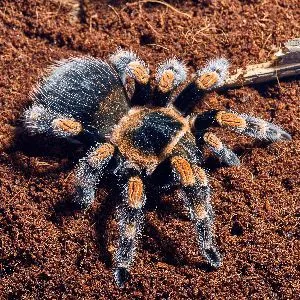The Mexican Red Knee Tarantula, Brachypelma hamorii, is a popular choice for both beginner and experienced arachnid enthusiasts. Their striking appearance, docile temperament, and relatively easy care requirements make them a fascinating pet. However, proper care is essential for their health and longevity. This comprehensive care sheet provides ten top tips to ensure your tarantula thrives.
Choosing Your Mexican Red Knee Tarantula
Selecting a healthy tarantula is the first and most crucial step in responsible tarantula ownership. A healthy tarantula is more likely to live a long and fulfilling life. Take your time, do your research, and choose wisely. Avoid impulse buys, and always prioritize the well-being of the animal.
Selecting a Healthy Tarantula
When selecting a tarantula, look for a specimen that is alert and active. It should be responsive to its environment. Avoid tarantulas that appear sluggish, lethargic, or uncoordinated. Check the tarantula’s abdomen; it should be plump and not excessively wrinkled, which could indicate dehydration or starvation. The tarantula should have all its legs and pedipalps, and the fangs should be intact. Look for any signs of mites or other parasites.
Identifying a Healthy Tarantula
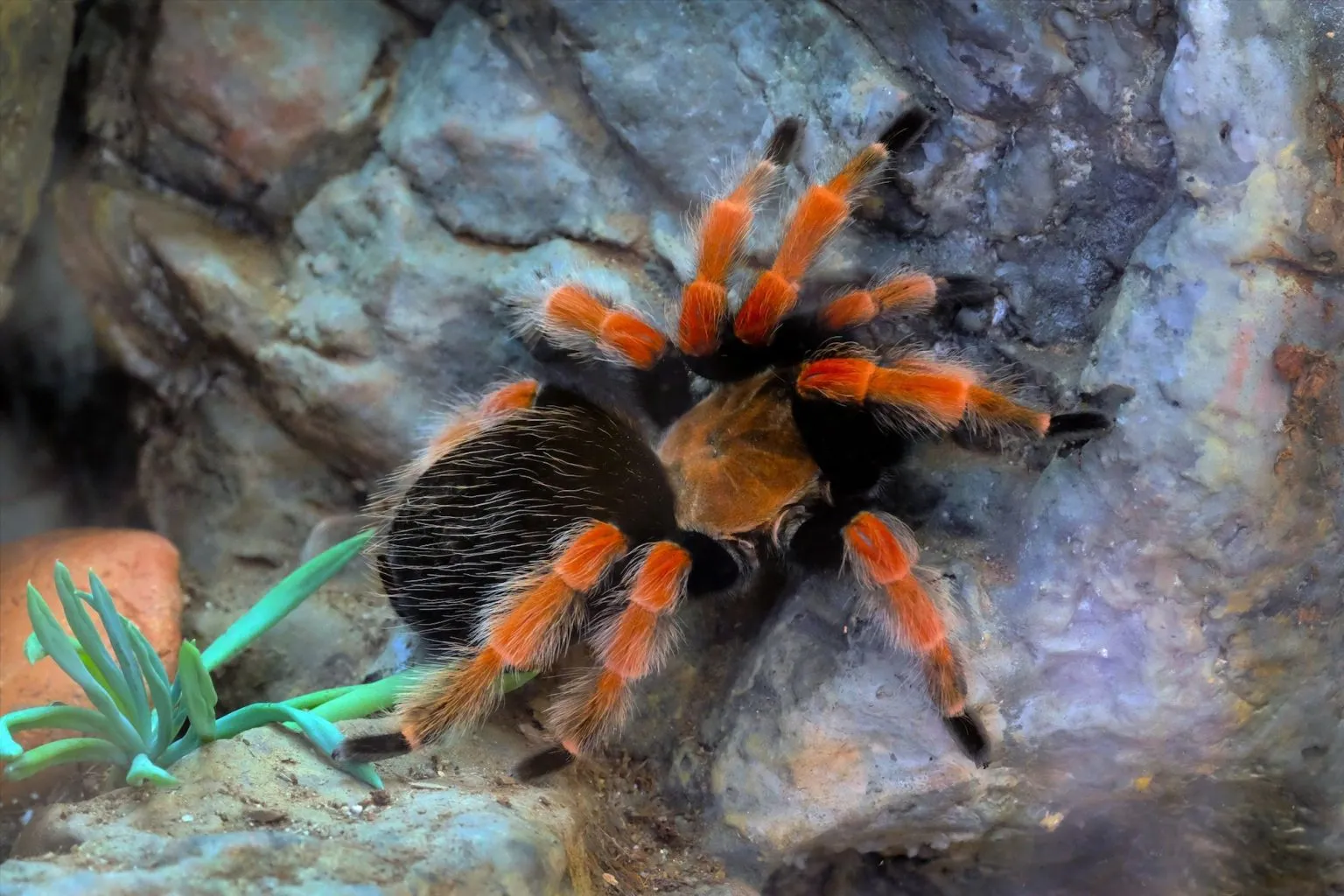
A healthy Mexican Red Knee Tarantula will typically have a vibrant color, with the characteristic red markings on its knees being particularly striking. The fangs should appear clean and free of any debris. The tarantula should move with a confident gait. The presence of premolt behavior is normal. Premolt tarantulas may refuse food, or spend most of their time in a burrow, it is not an indicator of a sick specimen.
Avoiding Common Health Issues
Quarantine new tarantulas to prevent the spread of diseases. Research the tarantula’s needs before purchasing. Purchase from reputable breeders or dealers. Always wash your hands before and after handling your tarantula or working in its enclosure. Provide proper care and maintain a clean environment to reduce the risk of illness.
Setting Up the Perfect Tarantula Enclosure
The enclosure is the tarantula’s home, so it’s essential to create a comfortable and safe environment. A well-designed enclosure not only provides shelter but also helps regulate temperature and humidity, which are crucial for the tarantula’s health.
Choosing the Right Enclosure Size
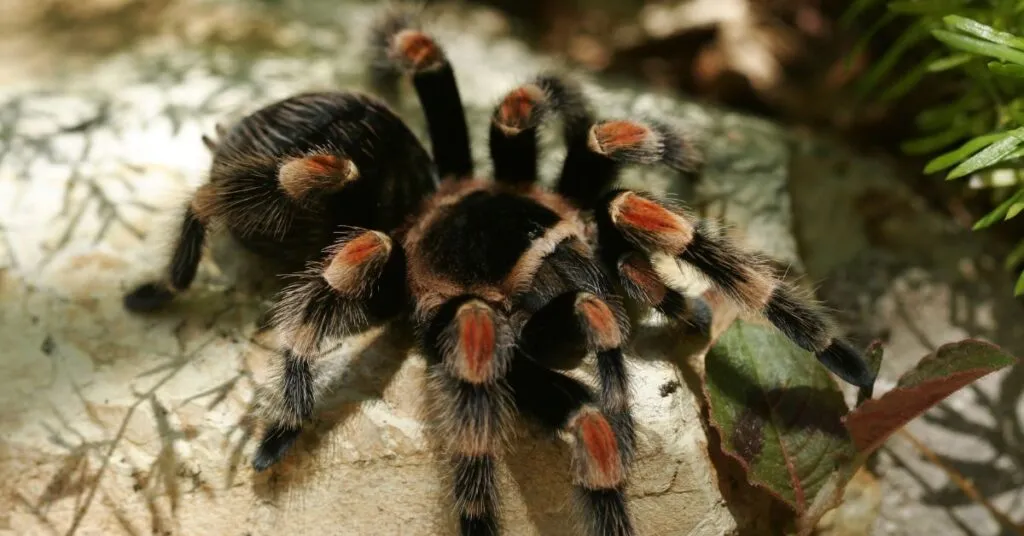
The size of the enclosure should be appropriate for the tarantula’s size. A good rule of thumb is to provide an enclosure that is approximately three times the tarantula’s leg span in width and length. For a juvenile Mexican Red Knee Tarantula, a 5-gallon aquarium or a similarly sized plastic enclosure is often sufficient. As the tarantula grows, you’ll need to upgrade to a larger enclosure, such as a 10- or 20-gallon tank. The height of the enclosure isn’t as critical as the width and length, but it should be tall enough to accommodate the substrate and any decorations.
Substrate Selection and Depth
The substrate provides a comfortable surface for the tarantula to walk on, and it helps to regulate humidity. A substrate depth of 4-6 inches is generally recommended. Suitable substrate materials include a mixture of peat moss, coco fiber, and vermiculite. Avoid using substrates that are too dry or too dusty, as these can cause respiratory problems. The substrate should be replaced or at least spot-cleaned regularly to maintain hygiene.
Providing Adequate Ventilation
Proper ventilation is essential to prevent the buildup of mold and mildew, as well as to ensure adequate air circulation. The enclosure should have ventilation holes on the sides and top. Avoid blocking the ventilation holes. The amount of ventilation needed depends on the size of the enclosure and the humidity levels. Ensure that ventilation is sufficient to prevent moisture from building up excessively within the enclosure, but also ensure to retain moisture enough to avoid dehydration.
Maintaining Optimal Temperature and Humidity
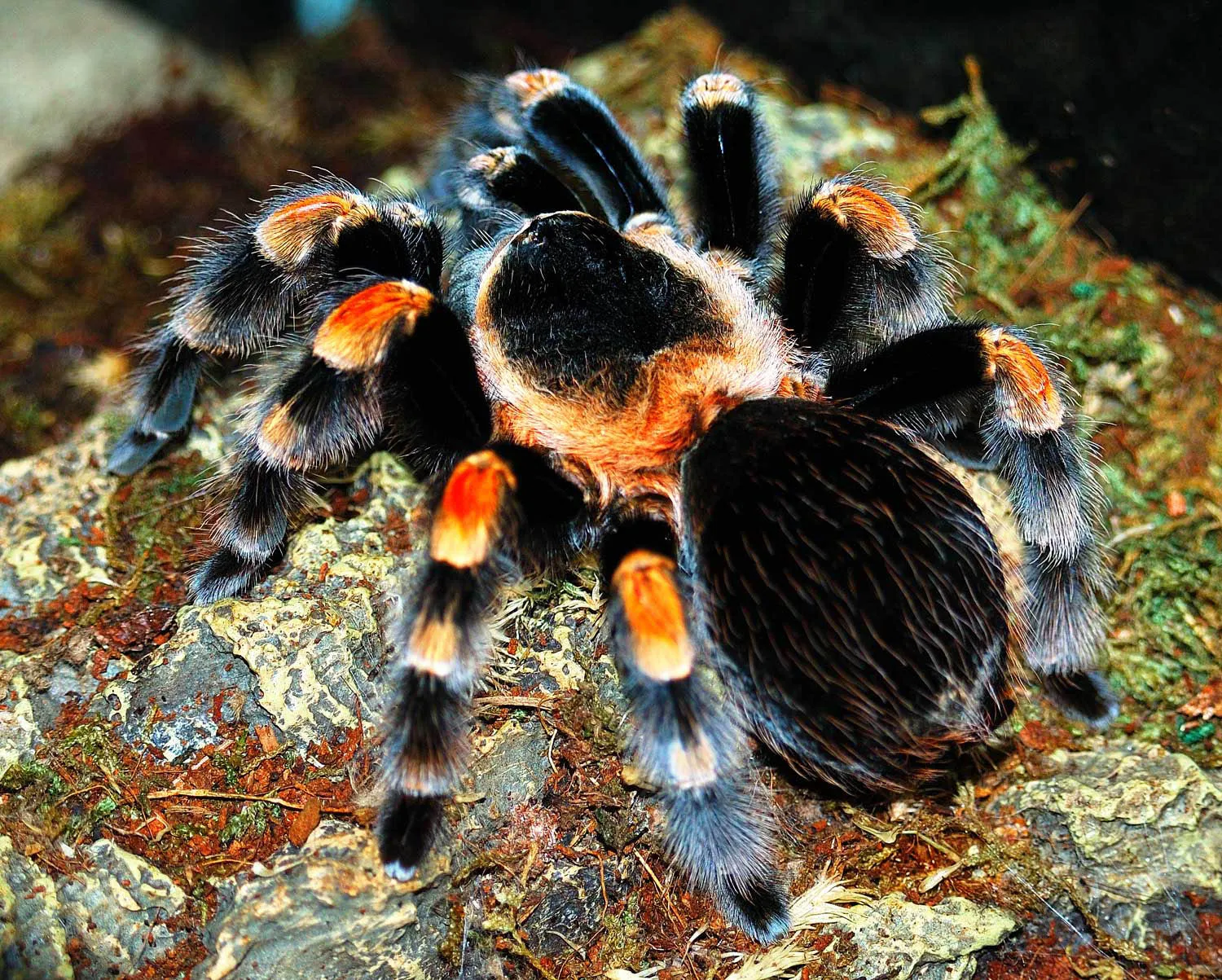
Mexican Red Knee Tarantulas thrive in specific temperature and humidity ranges. Maintaining the correct environmental conditions is crucial for their health and well-being. Regular monitoring is a must to ensure a healthy environment.
Temperature Requirements
The ideal temperature range for a Mexican Red Knee Tarantula is between 75-85°F (24-29°C). You can use a heat mat or a ceramic heat emitter to maintain the proper temperature. Place the heat source on one side of the enclosure to create a thermal gradient, allowing the tarantula to move to cooler areas if needed. Avoid direct sunlight, which can overheat the enclosure. Monitor the temperature regularly using a thermometer.
Humidity Levels
The ideal humidity level for a Mexican Red Knee Tarantula is between 60-70%. You can increase humidity by misting the enclosure with water, particularly on one side. Use a hygrometer to monitor the humidity levels. Be careful not to over-saturate the substrate, which can lead to mold growth and other health problems. Overly dry environments can lead to dehydration, impacting your tarantula’s health.
Monitoring with Thermometers and Hygrometers
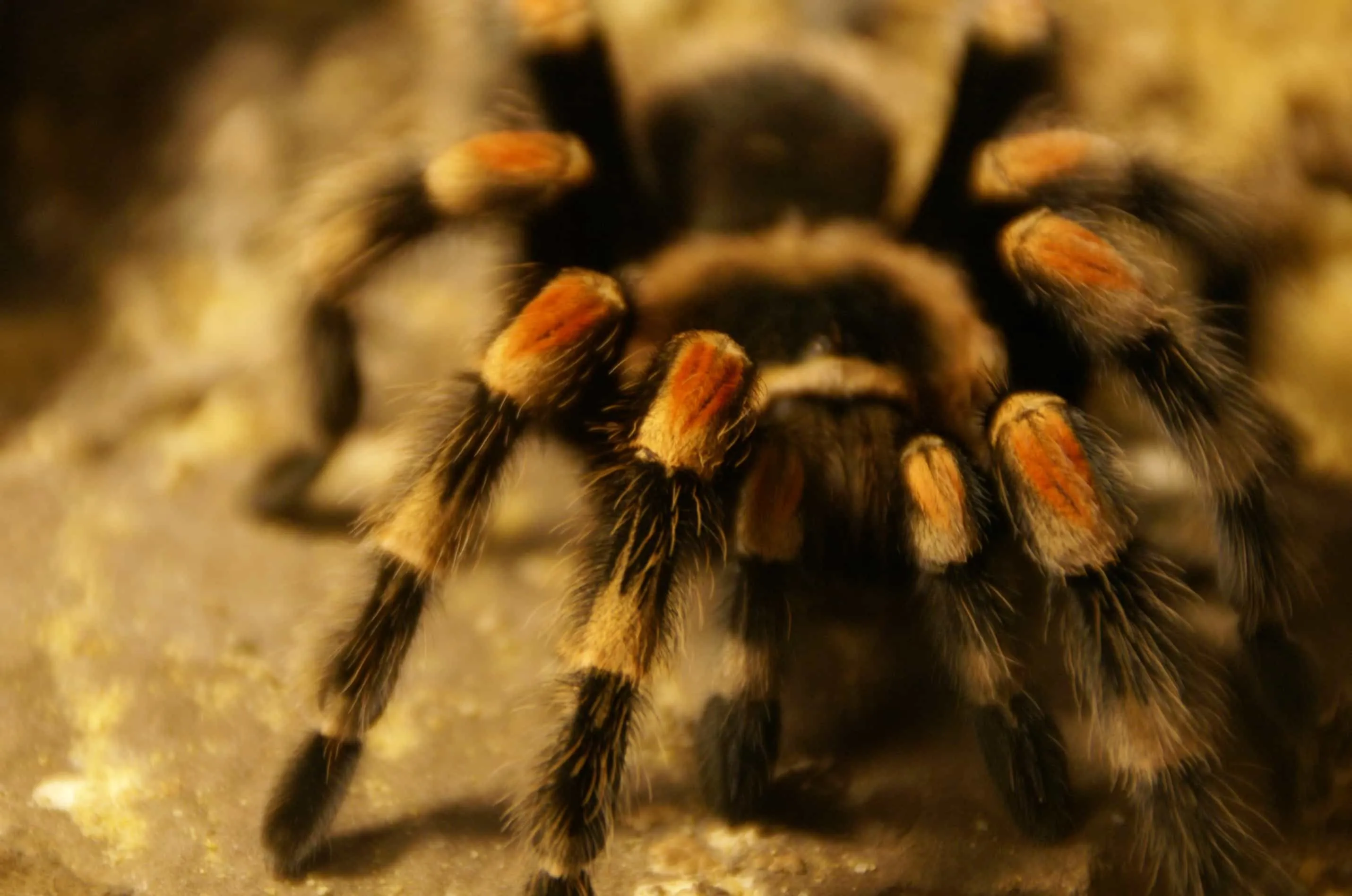
Regular monitoring of temperature and humidity levels is critical. Place a thermometer and a hygrometer inside the enclosure. Take readings at least once a day, or more frequently if necessary. Place the thermometer and hygrometer away from heat sources and ventilation holes to get accurate readings. Adjust the temperature and humidity as needed to maintain the optimal conditions.
Feeding Your Mexican Red Knee Tarantula
Providing a proper diet is essential for the health and growth of your tarantula. Overfeeding and underfeeding are to be avoided to maintain its well-being. Always offer fresh, healthy food items.
Appropriate Food Items
Mexican Red Knee Tarantulas are insectivores. Their diet should consist primarily of insects. Crickets, mealworms, and roaches are all suitable food items. The size of the prey should be appropriate for the tarantula’s size. The prey should be no larger than the tarantula’s body. Be sure to gut-load the insects with nutritious food for at least 24 hours before feeding them to your tarantula. This ensures that your tarantula receives the necessary nutrients.
Feeding Frequency
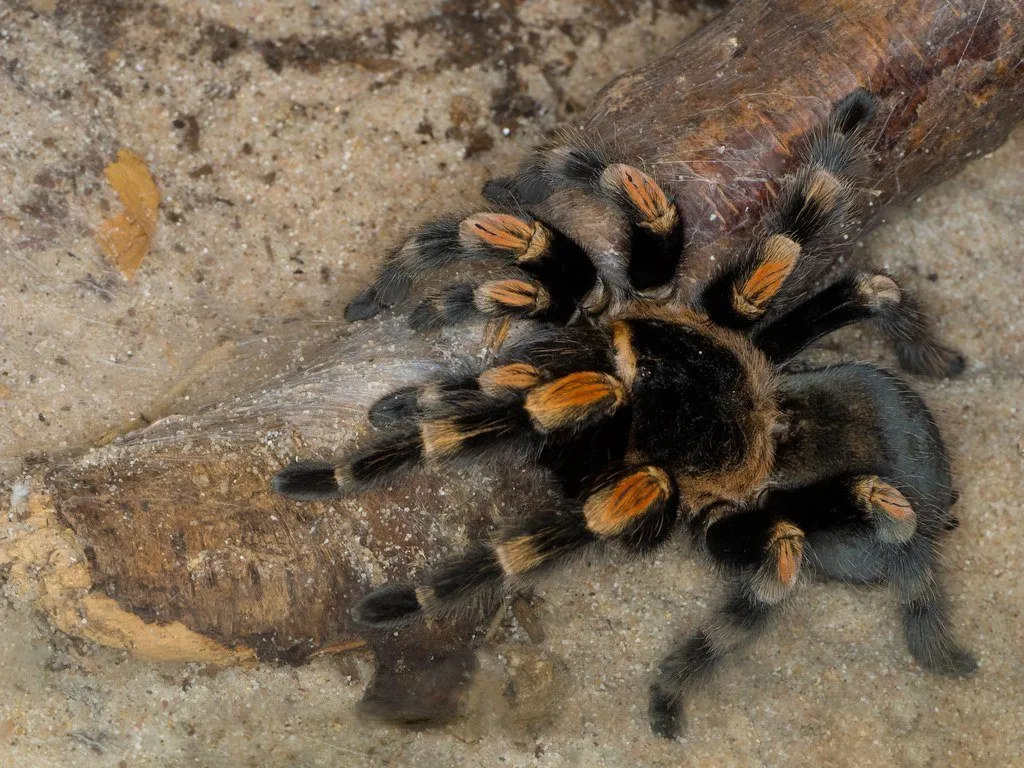
The feeding frequency depends on the tarantula’s age and size. Spiderlings should be fed every other day. Juvenile tarantulas can be fed 2-3 times a week. Adult tarantulas can be fed once a week or less. Remove any uneaten prey within 24 hours to prevent mold growth and to avoid stressing the tarantula. Always ensure that your tarantula has access to fresh water.
Watering and Hydration
Water is vital for all living creatures, and tarantulas are no exception. Providing fresh water is crucial for their health. Ensure access to clean water at all times.
Water Dish and Refilling
Provide a shallow water dish that is large enough for the tarantula to drink from. The dish should be secured to prevent it from tipping over. Use a water dish that is easily cleaned. Refill the water dish with fresh, dechlorinated water at least every other day, or as needed. Clean the water dish regularly to prevent the growth of bacteria and algae.
Misting and Humidity Control
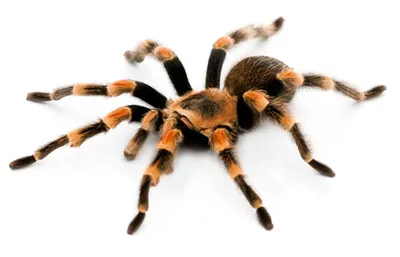
Misting the enclosure can help maintain humidity levels. Use a spray bottle with dechlorinated water to mist the enclosure. Misting is particularly important during molting. Do not mist the tarantula directly. Misting frequency depends on the humidity level and the substrate. Monitor the humidity level with a hygrometer and adjust the misting schedule accordingly. Be sure to mist only one side to provide a moisture gradient.
Handling and Interaction Guidelines
While Mexican Red Knee Tarantulas are generally docile, it’s best to minimize handling to avoid unnecessary stress and potential danger to both the tarantula and the handler. Tarantulas are not typically social animals. It is not advisable to hold your tarantula if you don’t have experience. Always prioritize the tarantula’s well-being.
Safe Handling Practices
If you must handle your tarantula, do so with extreme caution. Handle the tarantula close to the ground. Avoid dropping the tarantula, as this can cause serious injury or even death. Never handle a tarantula if it is stressed, in premolt, or recently molted. Wash your hands thoroughly before and after handling. Handle your tarantula in a safe, enclosed area. Do not allow children to handle the tarantula unsupervised.
Recognizing Stress Signs
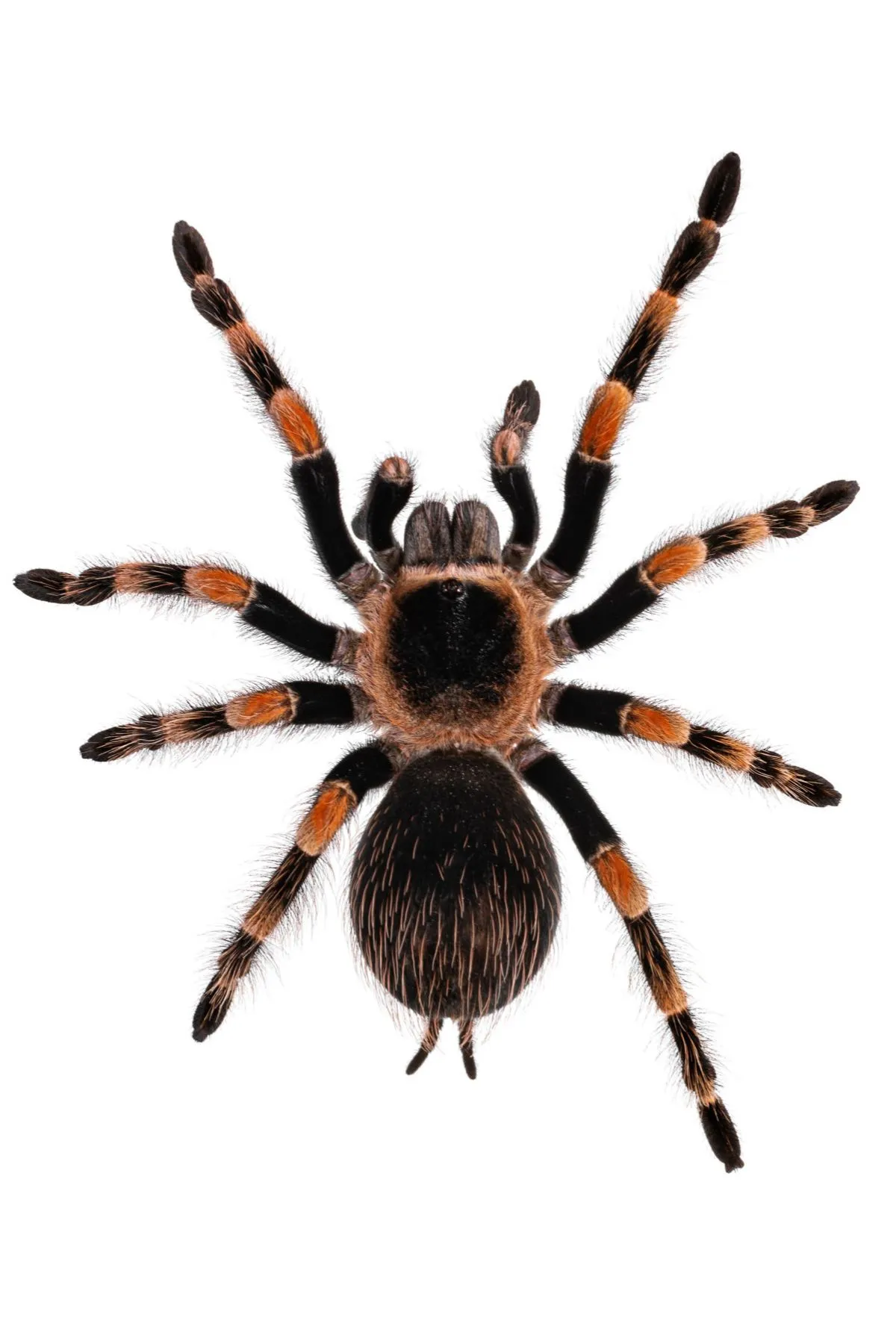
A stressed tarantula may exhibit certain behaviors that indicate it is uncomfortable. These include flicking hairs from the abdomen (a defense mechanism), raising its front legs in a defensive posture, or attempting to flee. If you notice these signs, stop handling the tarantula and allow it to retreat to its enclosure. Give the tarantula space and time to relax. Minimize disturbances to reduce stress.
Understanding Molting
Molting is a natural process for tarantulas where they shed their exoskeleton to grow. It’s a vulnerable time, so it’s important to know what to expect and how to care for your tarantula during this period.
What to Expect During Molting
Before molting, the tarantula may stop eating, become less active, and may spend more time in hiding. The abdomen may appear darker or more swollen. The tarantula will typically lie on its back during molting. The molting process can take several hours. Do not disturb the tarantula during molting. Provide a humid environment to assist the process. Observe from a distance and ensure that the tarantula is safe.
Post-Molting Care
After molting, the tarantula’s exoskeleton will be soft and fragile. Do not feed the tarantula for several days until the fangs have hardened. Provide access to fresh water. Increase humidity levels. The tarantula may be more vulnerable to injury during this time. Avoid handling the tarantula until the exoskeleton has fully hardened. Once the fangs harden, you can begin offering food again.
Maintaining Cleanliness and Hygiene
Maintaining a clean environment is essential to prevent disease and promote the health of your tarantula. Regular cleaning and hygiene practices will keep your tarantula happy and healthy.
Regular Spot Cleaning
Spot cleaning involves removing any uneaten prey, feces, and other debris from the enclosure. Use a pair of tongs or a small scoop to remove the waste. Spot clean the enclosure at least once a week. Avoid disturbing the substrate unnecessarily. This helps to maintain hygiene and reduce the risk of bacterial growth.
Complete Enclosure Cleaning
A complete enclosure cleaning involves removing all substrate, decorations, and the tarantula (if safe). Thoroughly clean and disinfect the enclosure using a reptile-safe disinfectant. Replace the substrate with fresh substrate. Clean and disinfect all decorations before returning them to the enclosure. A complete enclosure cleaning should be performed every few months or as needed. Ensure that the tarantula is safely housed during the cleaning process.
Identifying and Addressing Health Issues
Recognizing potential health issues early is crucial for providing prompt care and ensuring your tarantula’s well-being. Knowing how to recognize the early warning signs can greatly improve your tarantula’s chance of recovery.
Recognizing Common Diseases
Common diseases in tarantulas include fungal infections, bacterial infections, and parasitic infestations. Signs of illness include loss of appetite, lethargy, changes in behavior, and physical abnormalities. Fungal infections can appear as discoloration or lesions on the tarantula’s body. Parasitic infestations can manifest as mites or other visible parasites. If you observe any signs of illness, isolate the tarantula and consult with a veterinarian experienced in exotic animals.
Seeking Veterinary Assistance
If your tarantula shows signs of illness, it’s crucial to seek professional veterinary assistance. Not all veterinarians are familiar with tarantulas, so it’s important to find one who has experience with exotic animals. Provide the veterinarian with detailed information about the tarantula’s care, including its diet, enclosure setup, and any recent changes. Early diagnosis and treatment can significantly improve the tarantula’s prognosis. Never attempt to self-treat your tarantula, as this can be harmful.
The Importance of Enrichment
Enrichment provides opportunities for your tarantula to express natural behaviors and reduces stress. A stimulating environment improves your tarantula’s overall quality of life.
Providing Hides and Decor
Provide a hide, such as a cork bark or a half-log, for your tarantula to feel secure. Add other decorations, such as fake plants, to create a more naturalistic environment. Make sure that the decor is secure and won’t fall on the tarantula. A variety of hiding places helps the tarantula to feel safe. Arrange the decor to create a visually appealing and enriching environment. These features allow your tarantula to express its natural behaviors.
Benefits of Enrichment
Enrichment reduces stress and promotes natural behaviors. It provides mental stimulation. A well-enriched environment can contribute to a longer and healthier life for your tarantula. Provide variety in the environment to stimulate the tarantula. Observe your tarantula’s behavior to assess its environment.
Conclusion
Caring for a Mexican Red Knee Tarantula is a rewarding experience. Following these ten top tips will help you provide your tarantula with a healthy and fulfilling life. By creating a comfortable and stimulating environment, providing proper nutrition, and addressing health concerns promptly, you can enjoy the fascinating company of these beautiful creatures for many years to come. Remember that responsible pet ownership is key to the well-being of any animal.
